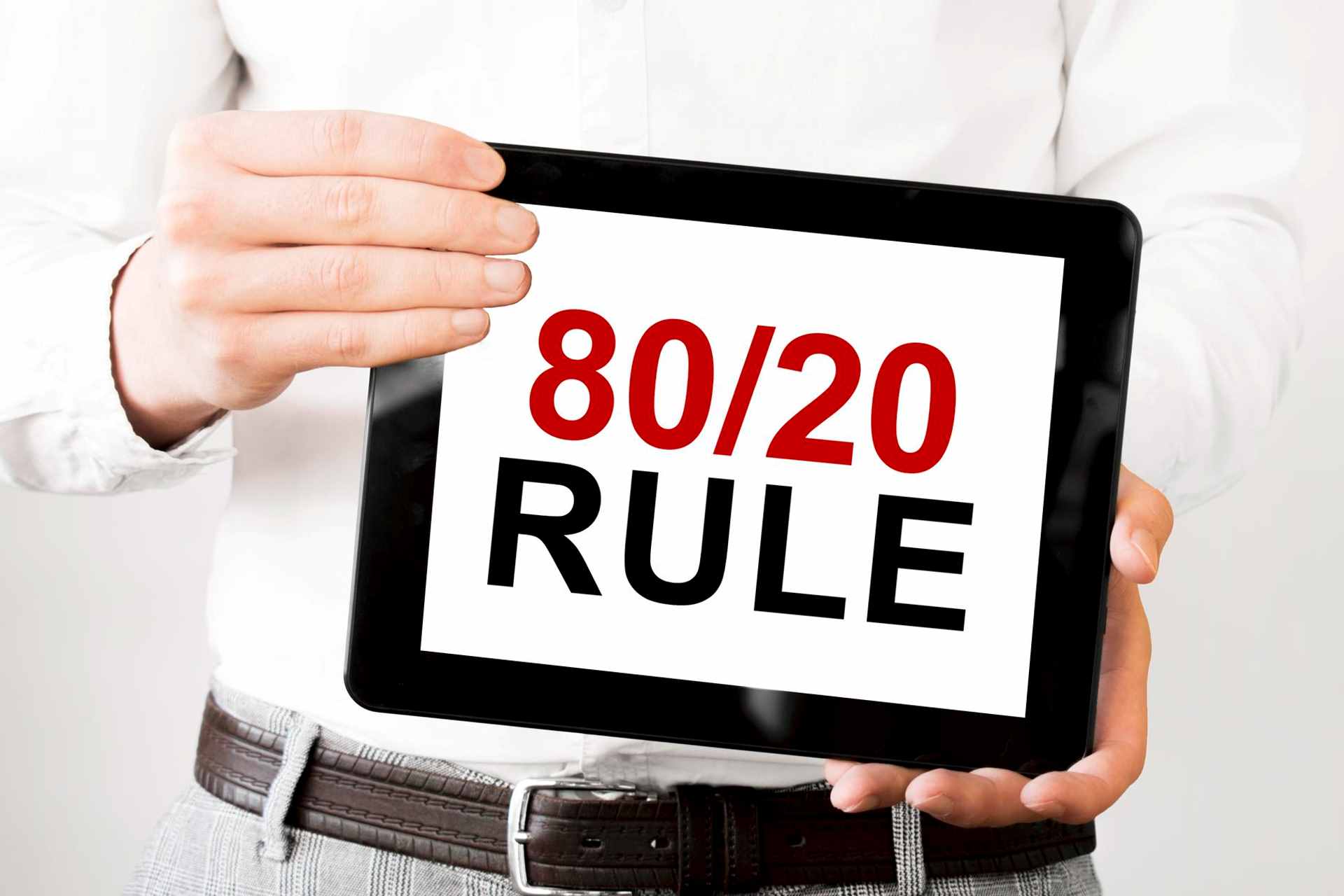Most people don’t come to social media to be sold something. They come to relax, scroll, laugh, learn, or connect. If your business is always pushing a sale, people might scroll right past or unfollow. That’s where the 80/20 rule for social media comes in.
It’s a smart way to balance what you share. You give, give, give… and then, once in a while, you ask. It’s like a conversation with a friend. You wouldn’t talk only about yourself. You’d share stories, listen, laugh, then maybe ask for a favor.
Let’s go deeper into what it really means and how to use it on different platforms.
80/20 Rule for Social Media Explained
Social media marketing agencies Phoenix define the 80/20 rule for social media like this:
- 80% of your posts should help, teach, entertain, or inspire your followers.
- 20% can talk about your products, services, or promotions.
Here’s an 80/20 rule for social media examples:
Let’s say you post 10 times in a week. Eight of those posts should make your followers feel seen, helped, or entertained. The other two can promote a sale or event or talk about your business.
For example, a gym shares 8 posts with workout tips, recipes, or motivational quotes. Then, 2 posts about a new membership deal.
Why Is the 80/20 Rule Important?
The 80/20 rule for social media is versatile. You can use it for all social media platforms. But why it’s important:
- It helps you find the few actions that drive most of your results.
- You waste less time on tasks that have little impact.
- It sharpens your focus and helps you make smarter choices.
- You can increase profits by investing in the most effective clients or products.
- It allows you to simplify your workload and get more done with less effort.
How to Use the 80/20 Rule in Content Strategy?
To apply and implement the 80/20 rule for social media in your content strategy, start by structuring every content calendar around two simple goals: give value and promote sparingly. Here’s how to do it, platform by platform:
- Plan 5–6 posts per week.
- Make 4 or 5 focused on audience needs: tutorials, FAQs, community highlights, or engaging questions.
- Reserve 1 or 2 for promotions—like product launches, service spotlights, or time-sensitive offers.
- Use performance data weekly to tweak your balance if needed.
- Post at least 3–5 times a week.
- Share tips, behind-the-scenes looks, user-generated content, or personal stories for 80% of your feed.
- Keep 20% for clear, bold promotional posts. Use Reels or carousels with a strong CTA.
- Ensure visual consistency across both types of content to maintain brand tone.
- Stick to 3–4 posts per week.
- Publish professional insights, thought leadership, industry updates, or client success stories.
- One post per week can promote a webinar, service, or download—but do it with value (e.g., “What you’ll learn…”).
- Focus on conversations, not just clicks.
Twitter / X
- Tweet 1–2 times daily.
- Schedule 8 informative or interesting tweets for every 2 promotional ones.
- Use polls, quick tips, or commentary to build interaction.
- Keep promo tweets direct, with short CTAs and links.
For All Platforms
- Use a calendar to batch your value and promo posts clearly.
- Track engagement weekly. If your promo posts underperform, check the tone or timing, not the rule itself.
- Make every promotional post feel earned by delivering consistent value first.
When you use the 80/20 rule for social media this way, your content becomes balanced, intentional, and easier to maintain over time.
Benefits of Using the 80/20 Rule in Content Strategy
- You earn the trust of your audience
- People engage more with your content
- Your feed feels more natural
- You avoid sounding pushy
- Followers stick around longer
- Sales posts get better results
- You become a go-to voice in your space
- Your posts get shared more often
- The strategy is easier to follow and manage
- You build stronger brand loyalty
Strategies for Using the 80/20 Rule in Your Content Plan
To make use of the 80/20 rule for sharing content on social media, you need structure. Start by breaking your calendar into value posts and promotional posts. Then, assign themes to each platform based on what your audience expects.
- Use “Theme Days” to stay consistent:
- Monday: Tips or how-to posts
- Wednesday: Industry news or client story
- Friday: Promotional offer
- Keep promotional content short and benefit-focused (e.g., “Book now, save 15%”).
- Run engagement polls or questions every week to keep value content active.
Example: A landscaping company shares 4 posts per week:
- Lawn care tip
- Client before/after photo
- Seasonal advice
- One promo post about summer packages
- Use Stories for daily value: quick tips, Q&A, or behind-the-scenes.
- Plan your grid: 8 of every 10 posts should give something useful: recipes, style ideas, reviews, etc.
- Promotions should look native. Instead of “Buy Now,” use “We made this for you—here’s why it helps.”
Example: A wellness coach posts:
- 3 tips on stress relief
- 2 client results stories
- 2 inspirational quotes
- 2 carousel posts promoting a new coaching package
- 1 Reels video with a soft CTA
- Share wins, research, or client lessons four times a week.
- Use the fifth post for a clear offer (webinar invite, downloadable resource, consultation slot).
- Keep it personal, not pitchy.
Example: A consultant might share:
- Monday: Insight from a recent project
- Tuesday: Industry stat with comment
- Wednesday: Helpful checklist
- Thursday: Client story
- Friday: Free strategy session link
Twitter / X
- Post in quick bursts throughout the week.
- Retweet leaders, ask questions, share stats or links—keep 80% focused on relevance.
- Use 1 in every 5 tweets for a promo, but make it timely, like an event or limited offer.
Example: A tech startup’s week might include:
- 12 tweets: tips, news, blog links, retweets
- 3 tweets: customer feedback or mini case studies
- 3 tweets: direct promotions with clear CTAs
Expert Social Media and Content Strategy Services in Phoenix, Arizona
If you need help using the 80/20 rule for social media, Wise Advertisement in Phoenix is here to guide you. We’ll help you plan your posts, write great content, and make sure your audience grows and sticks around.
We offer a FREE consultation, so there’s nothing to lose. Let’s build a better feed together.
Does the 80/20 Social Media Rule Work?
Yes, it works. People follow people they trust. And trust comes from giving more than you take. The 80/20 rule for social media makes it to do that.
If you want your audience to listen, you have to earn their attention. The 80/20 rule for social media helps you do that by giving more than you ask. It’s not magic. It’s just respect. Help first. Then promote.
FAQs about the 80/20 Rule for Social Media
What is the 80 20 rule for social media?
It means 80% of your posts should be helpful or fun. The other 20% can promote your business.
Is the 80/20 rule for posting on social media accurate?
Yes. It works well because people follow brands they trust, not ones that always sell.
What are 5 examples of the 80/20 rule?
Tips vs. sales, quotes vs. ads, behind-the-scenes vs. product push, tutorials vs. coupons, memes vs. promos.
Is the 80/20 rule in content strategy for all businesses?
Yes. Every brand can earn attention by offering value first.
How to add the 80/20 rule in content strategy to your marketing strategy?
Make a plan. Count your posts. Stay consistent. Use your promos wisely.
Can you change the 80/20 rule in content strategy based on platform or medium?
Yes. Some platforms may do better with 90/10 or 70/30. Just don’t flip it.
How often should you review your content strategy based on the 80/20 rule?
Check every month. Look at what’s working, then adjust. Test new ideas, but keep the balance.





